Real solutions
29th November 2016 | Journal Of Sales Transformation
This year’s Global Sales Transformation Event at the London Stock Exchange provided the opportunity for the first cohort of Consalia-Middlesex University Masters graduates to present their research findings.
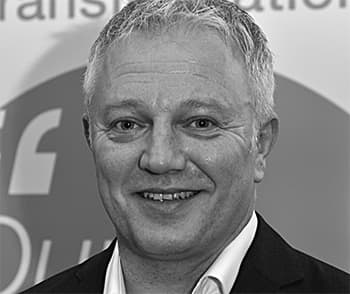
Carl Day, Channel Sales Director, Toshiba TEC UK: “Ethics – the DNA for value creation”
Carl Day, Channel Sales Director, Toshiba TEC UK: “Ethics – the DNA for value creation”
Opening with the confession that he sells photocopiers, Day articulated his dilemma as being: how to professionalise the reputation that photocopier salespeople have, while also admitting that the reputation is fair? “I don’t think rules and regulations will change it.”
In his project, Day applied research to an area of interest: ethics and trust. He investigated three groups of people: “transformed organisations”, procurement and sales. Of these three research groups, the transformed organisations were those that had previously encountered ethical problems but had found solutions. Day approached the pharmaceutical industry, which was “incredibly open and helpful” and also the finance industry “who were a little bit different”.
Through a combination of interview, survey and conversations, he collected a large body of raw data, which was then coded in order to transform it into something meaningful, through use of a “meaning table”. These elements could be grouped into themes, which tended to support the hypothesis that salespeople were often behaving in a way that does not foster trust with the client.
Lack of trust
Repeating the methodology with the three different control groups, Day found that the issue of trust – and specifically lack of transparency that was fuelling a lack of trust – recurred time and again.
He contrasted this with the situation in other professions. “You wouldn’t go to your doctor and – when the doctor asked you ‘What’s the problem?’ – you wouldn’t say: “I’m not going to tell you until I trust you!”
Therefore, Day set out to build an engagement process that included these two elements from the start in order to facilitate collaborative working between customer and salesperson. “It’s about co-creation, collaboration. It engages them in a thought process that perhaps they haven’t been engaged in before.” It also brings out the coach in the salesperson as well, Day told delegates.
2Results
In terms of raw results, compared with the same quarter in the prior year, the close rate for new partners in the channel business has gone up 40%; the team has delivered a 34% increase in revenue to his division. Day suggests his engagement methodology has contributed to that.
In conclusion, Day pointed out that Toshiba has grown revenues by 50% in a declining market. He puts that all down to the impact of education. “If you ask me whether education transforms people, I’d say ‘definitely’.”
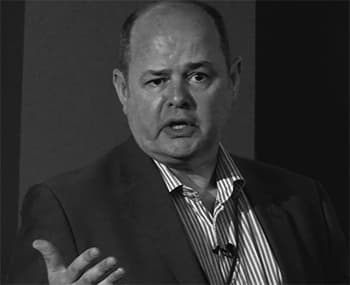
Harry Farrell, Local Alliances Manager, SAP: “Local service partners as transformation agents”
Harry Farrell, Local Alliances Manager, SAP: “Local service partners as transformation agents”
Farrell’s project related to a community of innovative SAP service partners who have the ability to help transform the organisation. His analysis was around five pillars: the role of the partner; understanding of the SAP innovation agenda; their concept of transformation; their concept of leadership; and their concept of agency.
He reached three main conclusions from this research:
- SAP has a lot of work to do in communicating its vision to customers, its partners and even to employees.
- Local service partners have a key role to play in SAP’s innovation agenda – because they’re agile; they tend to be quite compact organisations; they can decide and act on things very quickly; they’ve got great customer intimacy – they work very closely with SAP’s customers on the business pain points that they’ve got.
- SAP needs to engage with a broader range of partners – currently it likely engages actively with no more than 20-25% of them on a regular basis.
Outcomes
On a personal note, the professional development has made Farrell a better practitioner. He has also created a template for future partner engagement, to play to their strengths rather than just looking at them as sources of revenue. SAP is starting to think about how it can start to leverage partners’ IP and customer intimacy.
“In 2016 we’re seeing about 50% year-on-year growth from this group of partners.” The raised awareness achieved through the research project has contributed to this, according to Farrell. At the same time, the tangible outcome for the local service partner community has been the raised visibility this project has given them within SAP.
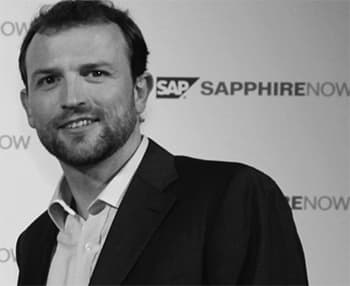
Axel Ferreyrolles, Head of Digital Learning, SAP: “A transformative enablement model for salespeople”
Axel Ferreyrolles, Head of Digital Learning, SAP: “A transformative enablement model for salespeople”
Ferreyrolles, one of the originators of the SAP Masters programme, opened with a question: “Can you remember a great training or even the best training you ever attended in your career?” and followed with some supplementaries: Why was it memorable? How much did you remember from it? How much did you apply from what you learnt? To the majority of the audience that could, he explained that they had experienced a “transformative training” that had bridged the so-called “knowledge transfer gap”.
The majority of businesspeople – and particularly salespeople – are more like goldfish: “We tend to forget everything within 48 hours.” Moreover, if you remember something you can bring it back to your office, but do you put it into action? After 120 days, this tends to stop, according to Ferreyrolles.
Assessing the results of his research, he noticed that SAP is “quite strong” at remembering training, so delivery is good. When it comes to using it, everybody “hides under the blanket”. If 15% use it, SAP is happy, but Ferreyrolles questioned whether this is good value for money in terms of the billions of euros spent on sales training. “You should fire me, but then you should fire marketing and sales operations and so forth.”
He added: “I believe there is a way out and that is to rethink the way we approach training; we use that model in a more effective way, and we start using it for design.
Ferreyrolles stressed that Sales Enablement and managers need to create a climate where what you have learnt and what your people have learnt is implemented. Those elements are in the tool he has created, although he admits it is not easy to do. However, this remains important because otherwise the money spent on development is simply not worth it.
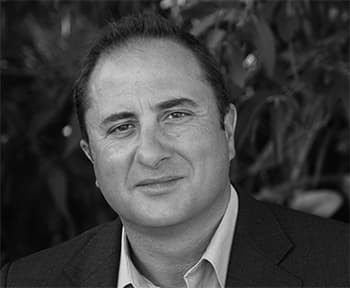
Brice Faure, Large Deals Manager – Strategic Customer Programme EMEA North, SAP: “Means of sustainable coaching for sales transformation”
Brice Faure, Large Deals Manager – Strategic Customer Programme EMEA North, SAP: “Means of sustainable coaching for sales transformation”
A key element of Faure’s new role is to coach senior sales professionals working on large opportunities. It is no coincidence that his Masters project focused on finding a sustainable method for coaching sales managers as an addition to the mentoring programme that was already available.
Although a sales director, Faure faced multiple challenges because he was not a coach and did not have a coach himself; moreover, there was no existing methodology at SAP.
Reflecting on the issues he decided that the approach should be positive, about helping people to be even better at what they do well, rather than seeking to fix something that was wrong. Equally, his research emphasised the sense that managers and participants in coaching sessions tend not to prepare adequately and that significant value is added if they do. In addition, time pressures tend to militate against being able to spend quality time with colleagues.
The key to a successful coaching session is to put in place a moment when the person is going to be happy to come, happy to think and reflect, happy to think also that the time allocated will be devoted to them without distractions. “I can tell you, it really made a difference.” Faure also explored how managers provided feedback to their teams, with an emphasis on avoiding pre-judging situations and helping colleagues to find solutions themselves.
Finally, how did Faure share the fruits of his research with colleagues? He was aware that very few would take the time to read the paper, so he produced a desk calendar complete with coaching tips of the day.
Readers can find a more in-depth summary of Faure’s research in the September 2016 edition of the Journal.
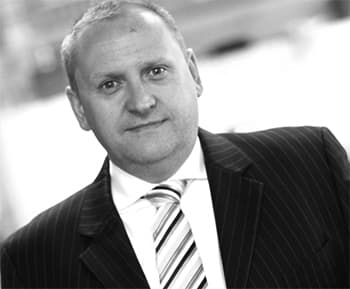
Paul Devlin, SAP Ariba General Manager: “Achieve explosive growth through data and coaching”
Paul Devlin, SAP Ariba General Manager: “Achieve explosive growth through data and coaching”
Describing how he has been in sales leadership for 15 of his 25-year sales career, Devlin explained that he had only encountered a sales leader whom he really admired two or three times over that period, Additionally, he was uncomfortable attending motivational events such as “winners circle” when he knew that 50% of his colleagues had failed. “If you look at the industry, 60% of salespeople never achieve budget.”
Zero coaching
The Masters programme gave him the opportunity to research his passion for people. He networked across the world to explore coaching: having asked 72 salespeople around the globe how much coaching they had received outside of an opportunity review, the universal response was none. Research among sales leaders, delivered the same conclusion: zero coaching.
Power of coaching
During his time in Dubai, a team member came to Devlin and offered to resign because he had zero success. However, following coaching and a change in his attitude, the salesperson started to gain some success. Part of the coaching approach was to ask team members every week what is the one thing you would do differently. Then the breakthrough deal came with a non-SAP customer: the team member went from zero to €3 million in year one; from €3 million to €10 million in year two; and from €10 million to €10 million in year three.
Additionally of a team of 12, 10 finished at or above budget; 7 out of 12 qualified for Winners Circle (approximately 135% of quota). The team went from nothing to being the best-performing team globally.


